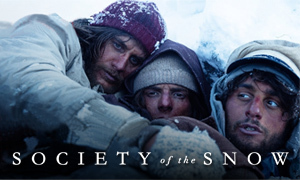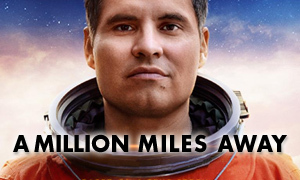Everest: History vs. Hollywood
| REEL FACE: | REAL FACE: |
Jake Gyllenhaal
Born: December 19, 1980 Birthplace: Los Angeles, California, USA | Scott Fischer
Born: December 24, 1955 Birthplace: Michigan, United States, USA Death: May 11, 1996, Southeast Ridge, Mt. Everest, 8300 m (exposure) Mountain Madness: Lead Guide |
Jason Clarke
Born: July 17, 1969 Birthplace: Winton, Queensland, Australia | Rob Hall
Born: January 14, 1961 Birthplace: New Zealand Death: May 11, 1996, South Summit, Everest (exposure) Adventure Consultants: Lead Guide |
Keira Knightley
Born: March 26, 1985 Birthplace: Teddington, Middlesex, England, UK | Jan Hall
Birthplace: New Zealand (also known as Dr. Jan Arnold) |
Josh Brolin
Born: February 12, 1968 Birthplace: Los Angeles, California, USA | Beck Weathers
Born: December 16, 1946 Birthplace: Texas Adventure Consultants: Client |
Robin Wright
Born: April 8, 1966 Birthplace: Dallas, Texas, USA | Peach Weathers
Born: abt 1948 |
Martin Henderson
Born: October 8, 1974 Birthplace: Auckland, New Zealand | Andy Harris
Born: September 29, 1964 Birthplace: New Zealand Death: May 10, 1996, Southeast Ridge, Mt. Everest, 8700 m (possibly fell off Lhotse Face) Adventure Consultants: Guide |
Michael Kelly
Born: May 22, 1969 Birthplace: Philadelphia, Pennsylvania, USA | Jon Krakauer
Born: April 12, 1954 Birthplace: Brookline, Massachusetts, USA Adventure Consultants: Client |
Sam Worthington
Born: August 2, 1976 Birthplace: Godalming, Surrey, England, UK | Guy Cotter
Birthplace: New Zealand Adventure Consultants: Guide |
John Hawkes
Born: September 11, 1959 Birthplace: Alexandria, Minnesota, USA | Doug Hansen
Born: May 28, 1949 Birthplace: Renton, Washington, USA Death: May 11, 1996, South Summit, Mt. Everest (possible fall) Adventure Consultants: Client |
Emily Watson
Born: January 14, 1967 Birthplace: Islington, London, England, UK | Helen Wilton
Born: abt 1956 Birthplace: New Zealand Adventure Consultants: Base Camp Manager |
Ingvar Eggert Sigurðsson
Born: November 22, 1963 Birthplace: Reykjavik, Iceland | Anatoli Boukreev
Born: January 16, 1958 Birthplace: Korkino, Russia Death: December 25, 1997, Annapurna Sanctuary, Nepal (avalanche) Mountain Madness: Guide |
Elizabeth Debicki
Born: August, 1990 Birthplace: Paris, France | Dr. Caroline Mackenzie
Birthplace: New Zealand Adventure Consultants: On-Site Physician |
Tom Goodman-Hill
Born: 1968 Birthplace: Enfield, Middlesex, England, UK | Neal Beidleman
Born: September 6, 1959 Birthplace: Fairfax, Virginia, USA Mountain Madness: Guide |
Vanessa Kirby
Born: April 18, 1988 Birthplace: Wimbledon, London, UK | Sandy Hill Pittman
Born: April 12, 1955 Birthplace: Los Gatos, California, USA Mountain Madness: Client and Journalist |
Thomas M. Wright
Born: June 22, 1983 Birthplace: Melbourne, Victoria, Australia | Michael Groom
Born: 1959 Birthplace: Australia Adventure Consultants: Guide |
Mark Derwin
Born: October 28, 1960 Birthplace: Park Forest, Illinois, USA | Lou Kasischke
Born: 1942 Birthplace: Bay City, Michigan, USA Adventure Consultants: Client |
Ang Phula Sherpa
Born: September 18, 1985 Birthplace: Balaju, Nepal | Ang Dorjee Sherpa
Born: 1970 Birthplace: Pangboche, Nepal Adventure Consultants: Climbing Sherpa |
Pemba Sherpa
| Lopsang Jangbu Sherpa
Born: abt 1972 Birthplace: Nepal Death: September 25, 1996, Mount Everest (avalanche) Mountain Madness: Sirdar |
Clive Standen
Born: July 22, 1981 Birthplace: County Down, Northern Ireland, UK | Ed Viesturs
Born: June 22, 1959 Birthplace: Fort Wayne, Indiana, USA IMAX Expedition |
Micah Hauptman
Born: December 26, 1973 Birthplace: Philadelphia, Pennsylvania, USA | David Breashears
Born: December 20, 1955 Birthplace: Fort Benning, Georgia, USA IMAX Expedition |
Did Rob Hall really call his wife shortly before dying on Everest?
Like in the movie, Rob Hall spoke to his wife on his radio via a satellite connection patched through by Helen Wilton from a mountainside campsite roughly 8,000 ft below him. He had spent the night of the blizzard on an outcrop that was about 400 ft below Everest's 29,029-ft summit. Alone in the brutal-cold near-oxygen-free air, Hall had come to terms with the realization that he was going to die. As in the Everest movie, the true story confirms that after naming their unborn baby "Sarah," he told his wife Jan, "I love you. Sleep well, my sweetheart. Please don't worry too much." That was the last time anyone heard from Hall. -TIME.com
Which accounts is the Everest movie based on?
No single book or account was cited as the inspiration for William Nicholson and Simon Beaufoy's screenplay, but the press materials for the movie mention both Jon Krakauer's bestselling book Into Thin Air: A Personal Account of the Mt. Everest Disaster and Beck Weathers' Left for Dead: My Journey Home From Everest. Krakauer is a journalist/mountaineer who was on assignment from Outside magazine as part of Rob Hall's Adventure Consultants team. He is portrayed by Michael Kelly in the Everest movie. Josh Brolin portrays Weathers, a Dallas pathologist.
How many people died during the 1996 Mount Everest disaster?
Eight people died during the Mount Everest disaster that unfolded May 10-11, 1996. The fatalities included Scott Fischer, Rob Hall, Andy Harris, Doug Hansen, Yasuko Namba, Tsewang Samanla, Dorje Morup, and Tsewang Paljor. In fact-checking the Everest movie, we learned of the unidentified corpse known as Green Boots (pictured below), who is commonly believed to be Tsewang Paljor, one of the eight who perished in the Mount Everest disaster. Paljor was a constable with the Indo-Tibetan Border Police and was part of a three-man expedition attempting to become the first Indian team to reach the top of Everest from the northeastern route. He was wearing green Koflach boots on the day his team summited in 1996.
What is Everest's Death Zone?
The "death zone" is a general term used to describe an area of a mountain above 8,000 meters or roughly 26,000 feet, where the human body can no longer acclimatize and simply begins to die. No matter how much training, without supplemental oxygen one cannot spend more than approximately 48 hours in the death zone, a region found only on 14 mountains worldwide, including Everest. The oxygen level there is roughly only one third of the value at sea level, which in basic terms means that the human body will exhaust its oxygen supply faster than breathing can replenish it. Mental and physical states are affected, leading climbers to experience hallucinations, deterioration of bodily functions, loss of consciousness, the feeling of slowly being choked, and finally, death. -Gizmodo.com
How many bodies remain on Mount Everest?
While researching the Everest true story, we learned that more than 150 bodies remain on Mount Everest today. Almost all of them are located in the Death Zone, where such harsh conditions make recovering the bodies a suicidal endeavor. A Nepalese police inspector and a Sherpa learned this lesson the hard way when they fell to their deaths while trying to recover the body of Hannelore Schmatz in 1984. Hannelore had died of exhaustion in 1979 when she was just a hundred meters from Camp IV. For years, climbers taking the southern route could see Hannelore's body sitting upright against her backpack, her eyes open and her brown hair blowing in the wind. In the late 1990s, high winter winds finally swept Hannelore's remains over the edge and down the Kangshung Face. -Macleans.ca
While some of these doomed climbers were lost forever in crevasses or were blown off the mountain into the void, many still remain, mummified and frozen in time. One such area just below the summit has come to be known as Rainbow Valley due to the number of corpses there still clad in their colorful climbing jackets. -Gizmodo.com
Did Beck Weathers really nearly fall while crossing the ladders?
Yes, but the Everest movie dramatizes the situation a bit. In the film, Josh Brolin's character loses his footing on a ladder as an avalanche unfolds nearby. As he holds on for his life, Rob Hall (Jason Clarke) comes out to rescue him. Jon Krakauer, author of Into Thin Air, simply stated that both Beck Weathers and Yasuko Namba had at several times "appeared to be in danger of falling off a ladder and plummeting into a crevasse." Weathers himself wrote that navigating the hazardous ladders of the shifting Khumbu Icefall is like being "an ant trapped in the bottom of an ice machine" (Left for Dead). Watch footage of real climbers crossing the ladders of the Khumbu Icefall.
Was Beck Weathers (portrayed by Josh Brolin in the movie) really left for dead?
Yes, twice. Things first went wrong for Dallas pathologist Beck Weathers when the effects of high altitude and extended exposure to ultraviolet radiation blinded his eyes, which had recently been altered by radial keratotomy surgery (a precursor to LASIK). Instead of making the ascent to the summit, he eventually decided to descend and grew weaker in the storm. Anatoli Boukreev arrived later to help, but Weathers and female Japanese climber Yasuko Namba were unconscious and appeared to be beyond saving. They were left to die. At daybreak, Stuart Hutchison and two Sherpas arrived to reassess the status of Weathers and fellow climber Yasuko Namba. They concluded that both were near death and decided to leave them behind, believing they would not survive the descent.
"I woke up in the snow, opened my eyes, and directly in front of me was my ungloved right hand, which was clearly dead," Weathers remembers. "It looked like a marble sculpture of a hand. I hit it on the ice and realized that so much of my tissue was dead, I wasn't feeling any pain. That had the marvelous effect of focusing my attention. I had an innate awareness that if the cavalry was going to come rescue me they would already have been there. If I didn't stand up, I realized, I was going to spend eternity on that spot." Like in the movie, Weathers thought of his family for motivation.
Weathers made his way to Camp IV. When he arrived his hands were frozen solid and looked like a cadaver's (pictured below). His cheeks and nose where black and resembled solid ash. However, he was alive. Following his evacuation, his right arm was amputated halfway between the wrist and the elbow. His thumb and all four fingers on his left hand were removed, in addition to parts of both his feet. His nose was amputated and a new nose was grown on his forehead, which incorporated tissue from his ear. -TIME.com
What is the temperature on top of Mount Everest?
Climbers typically make their ascent to Everest's 29,029 ft summit during a two-week window in May when conditions are at their best. Then, the temperature around the summit of Everest can rise to an average of -4 degrees Fahrenheit, compared to an average of -31 degrees Fahrenheit during months when the winds pick up.
Mt. Everest is so high that the summit actually protrudes into the stratosphere, where jet streams create 100+ mph winds during most months and temperatures can plummet as low as -76 degrees Fahrenheit. The winds alone can easily send climbers hurtling off the mountain to their deaths. In February 2004, a record wind speed of 175 mph was recorded at the summit. By comparison, a Category 5 hurricane has sustained wind speeds greater than 157 mph. -PopularMechanics.com
Why were there so many climbers at the summit on the day of the Everest disaster?
As stated above, there is only a short two-week window each year in May when climbing conditions are at their best. In 1996, there was an unusually late and heavy snow pack, which had kept any yaks from reaching Base Camp, causing a multitude of climbers to make their ascent just after the yaks were able to get the supplies to the camp. This, coupled with the growing commercialization of Everest expeditions, resulted in some 33 climbers attempting to summit Everest on May 10, 1996, creating bottlenecks at the Hillary Step, the last hurdle before reaching the top (see footage of real climbers conquering the Hillary Step and reaching the top). These bottlenecks were worsened by the fact that the Sherpas and guides had not yet placed a fixed line, causing the climbers to have to wait for roughly an hour while the ropes were installed. This happened at both the Hillary Step and further down near the Balcony. As a result, many of the climbers did not reach the summit by the 2 pm turnaround time, the last safe time to make it back to Camp IV before nightfall. -Into Thin Air
Why didn't the Sherpas place the fixed lines ahead of time to shave hours off the climb?
A Sherpa from Rob Hall's team and another from Scott Fischer's team were supposed to head out early to attach ropes into the rock and ice to help the climbers quickly traverse the most difficult sections. However, Scott Fischer's Sherpa, Lopsang Jangbu, never showed up, and Rob Hall's Sherpa refused to work alone. Lopsang was busy towing journalist and socialite Sandy Pittman via short-rope. Jon Krakauer, fellow climber and author of Into Thin Air, says that it was "hugely important" to Scott Fischer that Sandy make it to the top. "You can't buy that kind of advertising," says Krakauer. -Dateline
Did Beck Weathers' wife Peach really make calls to find a helicopter to fly up Everest and rescue her husband?
Yes. Like in the Everest movie, the true story reveals that Peach Weathers was instrumental in organizing her husband's helicopter rescue. She enlisted the help of her friends and fellow moms, who began calling everyone they could think of. They contacted U.S. Senator Kay Bailey Hutchison from Texas and Tom Daschle, the Democratic Senate minority leader. Daschle encouraged the State Department to act, and they reached out to David Schensted at the embassy in Kathmandu. After Schensted was turned down by several pilots, a Nepalese woman he worked with recommended Lieutenant Colonel Madan Khatri Chhetri, a Nepalese Army pilot who she suspected might accept the challenge, and he did. -DMagazine.com
Was the helicopter rescue of Beck Weathers the highest ever completed?
At the time in 1996, the helicopter rescue of Beck Weathers and Taiwanese climber Makulu Gau from above Everest's Icefall at 19,860 feet by Nepalese Lt. Col. Madan Khatri Chhetri was the highest rescue ever completed, and it also set the record for the highest helicopter landing (NationalGeographic.com). The climbers scrambled to clear a landing zone, using Kool-Aid to mark an 'X' in the snow (they use Gatorade in the movie). The helicopter circled and eventually landed, but unlike what is shown in the movie, Weathers gave up his spot for Makulu Gau, who was in worse condition. "It seemed like the thing to do at the time," says Weathers. "When that helicopter took off with Makulu in it though I must tell you my spirits were down around by my feet, because I didn't think he was coming back." Fortunately, the pilot was able to return for Weathers after dropping off Gau.
In fact-checking the Everest movie, we learned that in 2010 three climbers from a Spanish expedition were rescued via a long line from an elevation of 22,900 feet on Nepal's Mount Annapurna (Outside Online). The record for the highest helicopter landing was shattered in 2005 when test pilot Didier Delsalle landed his turbo engine AS350 B3 helicopter on the top of Mount Everest (NationalGeographic.com).
What is a Sherpa?
During our investigation into the Everest movie true story, we learned that the Sherpa are an ethnic group of people from the most mountainous area of Nepal, including Mt. Everest. They are highly experienced mountaineers who are very knowledgeable of their local terrain. The term Sherpa is commonly used by foreigners to refer to any guide, climbing assistant or porter paid to accompany climbers on mountaineering pursuits in the Himalayas. Sherpas are basically the keepers of the mountain and are instrumental in maintaining the routes to the top. The Sherpas' unique climbing ability is due in part to the fact that they have adapted genetically to living at high altitudes. 11 real-life Sherpas were cast in the Everest movie.
Did a confused Andy Harris mistakenly tell Rob Hall that all of the oxygen tanks were empty?
Yes. While in the throes of hypoxic dementia, Andy Harris got on the radio to tell Rob Hall that he was at the oxygen cache on the South Summit but all of the tanks were empty. Rob was high on the summit ridge trying to help Doug Hansen, who was in desperate need of oxygen. Andy was confused and in bad shape himself, not realizing that there were actually two full tanks at the South Summit cache. Mike Groom tried to radio Rob to correct Andy's mistake, but his radio was malfunctioning. -Into Thin Air
Did Andy Harris walk off the South Summit to his death?
Yes, it is believed that Andy Harris (portrayed by Martin Henderson in the Everest movie) walked off the South Summit during the storm when he was disoriented from the effects of high-altitude cerebral edema (HACE). He apparently disappeared in the South Summit area near where his ice axe was found and where Doug Hansen disappeared as well. It is possible that Andy had decided to climb back up in an attempt to assist Rob Hall with an ailing Doug Hansen. The bodies of Andy Harris and Doug Hansen have not been found to date. -A Day to Die For
HACE occurs when the body fails to acclimatize at high altitudes, such as in Everest's Death Zone. Disorientation, nausea, lethargy and eventually coma and death can occur in climbers suffering from HACE.
What exactly led to Scott Fischer's death?
Scott Fischer's personal friend and client Dale Kruse was suffering from altitude sickness and possible HACE at Camp I (19,898 ft). Fischer decided to climb down from Camp II (21,325 ft) to take Kruse back to Base Camp (17,500 ft) for treatment. Fischer made the 4,000-foot climb the next morning to rejoin his team at Camp II. He did not get adequate rest time before departing for Camp III (24,500 ft) with his team the next day. His ascent to Camp III was slow and when the more than 50 climbers left for Camp IV (25,938 ft) on the morning of May 9, Fischer was one of the last to depart.
Setting out for the summit (29,029 ft) just before midnight, Scott Fischer didn't arrive there until 3:30 pm, well past the 2 pm cutoff time to safely make it back to Camp IV before dark. He radioed Base Camp and told them he was weary and felt sick. He descended in the blizzard to just above the Balcony (27,559 ft), telling Lopsang Jangbu Sherpa to descend without him and to send Anatoli Boukreev up to help. Suffering from hypoxia (lack of oxygen) and most likely cerebral edema as well, Scott Fischer sat down in the route, never to get up again. When the storm subsided on May 11, two Sherpas arrived to help but it was too late. His breathing was shallow and he was not responding. They placed an oxygen mask over his face and left him be. He died before Anatoli Boukreev reached him. Boukreev lashed Fischer's backpack over his face and moved his friend's body off the climbing route (The Climb). It still remains on the mountain.
Is Mount Everest the world's tallest mountain?
Mount Everest is the world's tallest mountain above sea level, rising 29,029 ft (this value can vary based on measuring criteria). However, Mauna Kea, a dormant volcano on the Big Island of Hawaii, is the world's tallest mountain when measured from its base below sea level, rising approximately 33,474 ft from the Pacific Ocean floor.
Why did journalist Jon Krakauer want to climb Mt. Everest?
"I climbed for the wrong reasons," says Jon Krakauer, author of Into Thin Air. "I'd always wanted to do it as a kid. ... The excuse was, I was broke and I was a freelance journalist and I was getting paid well, but really, I would have paid money to go on that trip. I wanted to climb Everest, because it's Everest. I wasn't used to being guided. To be guided, you advocate your own decision making, your own judgement, you listen to what the captain of the ship orders you to do and you have to do it. The system doesn't work otherwise." Krakauer also says that it made him really uncomfortable that Sherpas were taking the risk for him. "Everest is a really different mountain than anything else," he adds. -HuffPostLive Jon Krakauer Interview
Did Rob Hall steal journalist Jon Krakauer from Scott Fischer?
Yes, for the most part. Jon Krakauer, a journalist on assignment from Outside magazine, was originally slated to climb with Scott Fischer and his Mountain Madness team. However, Rob Hall agreed to reduce Outside magazine's fee to less-than-cost for Krakauer's spot on Hall's Adventure Consultants team. It wasn't a total loss for Scott Fischer, who was taking Sandy Hill Pittman, a wealthy socialite and former fashion editor who was working with NBC Interactive Media to stream a journal and daily video blog back to a website for schoolchildren in the United States (EverestNews.com).
Was Rob Hall's body found by members of the IMAX expedition?
Yes, the Everest true story reveals that mountaineers from the IMAX expedition discovered Rob Hall's body on their way to the summit on May 23, 1996, roughly 12 days after Hall's death from exposure. The IMAX team, which included Ed Viesturs and David Breashears, were filming the 1998 documentary Everest. The film had been in production at the time of the disaster, but shooting was postponed as the IMAX team followed Ed Viesturs up the mountain to help the stranded climbers, including Beck Weathers. The IMAX team also came across Scott Fischer's body.
Have there been worse Everest disasters in the years since 1996?
Yes. When fact-checking Everest, we learned that two more recent disasters on the mountain have taken more lives. The 1996 Everest disaster claimed eight lives and was the deadliest day in Everest's recorded history until 2014, when an avalanche resulted in the deaths of 16 Nepalese guides. That toll was topped in 2015 when the Nepal earthquake caused avalanches on Everest that led to 18 deaths.
Have any other movies been made about the 1996 Mount Everest disaster?
Yes. The 1997 made-for-TV movie Into Thin Air: Death on Everest was also based on the book Into Thin Air by Jon Krakauer, a journalist/mountaineer who was caught in the middle of the 1996 Mount Everest disaster while on assignment for Outside magazine. Krakauer was part of Rob Hall's Adventure Consultants' expedition.
1996 Everest Disaster Interviews & Related Videos
Further explore the Everest true story via the videos below, including an interview with Jon Krakauer in which he says climbing Everest was the biggest mistake of his life.
Link-to-Learn More:
- Scott Fischer's Mountain Madness Company Website
- Rob Hall's Adventure Consultants Company Website
- Official Everest Movie Website







